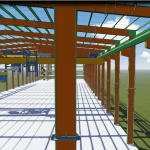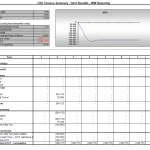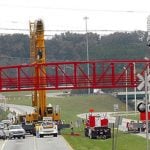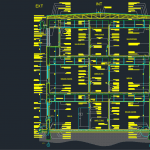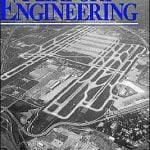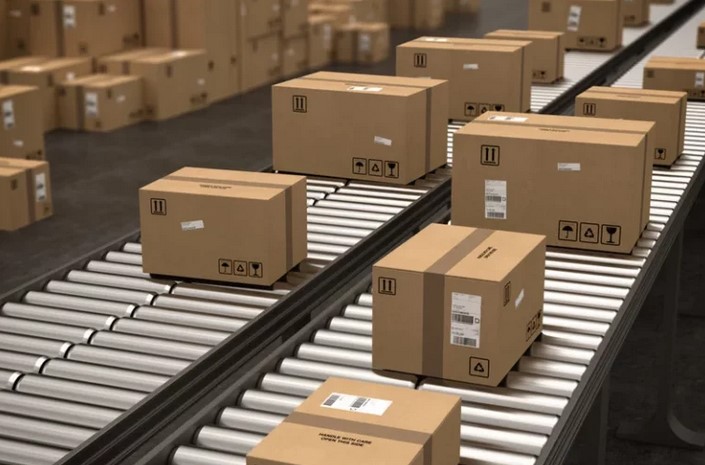
How to Determine Which Conveyor System is Best for Your Operations
9 September 2022Table of Contents
How to Determine Which Conveyor System is Best for Your Operations
Conveyor systems are widely used because they save companies time, money, and resources that would otherwise be spent moving materials. There are many different types of conveyor systems that can be used in a variety of applications. But, how do you know which one’s best for your company?
What is a conveyor system?
Conveyor systems make it easier to move objects from one place to another. Their design allows you to move materials too heavy or bulky to carry by hand effectively. These pieces of automated equipment can be seen in a variety of places such as airports, scrap yards, large factories, and even grocery stores.
Commonly used types of conveyor systems
With so many different types of conveyor systems, it can be difficult to choose one that best suits your unique operation. However, once you have a basic understanding of the main types of conveyor systems, the choice will be much easier.
Let’s take a look at some of the kinds of conveyor solutions and the different purposes each one serves:
Belt Conveyor
Belt conveyors consist of a wide belt that fits over a flat surface or rollers to move items from point A to point B. These systems are stable, keeping the items in position, so they are unlikely to jostle and fall. They also keep the items transported at a consistent pace. That way, you don’t have to worry about your materials bumping into one another or becoming unorganized during transport.
Chute Conveyor
A chute conveyor is the most basic example of a gravity-operated system. They are used in bulk-handling applications to gather items into shipping areas or convey items between floors. Chute systems can even be used to easily load belt conveyors or transfer materials from one moving belt to another.
Gravity Roll Conveyor
Gravity roll conveyors allow materials to move on the rollers using momentum rather than a motor. Warehouse facilities often use these rollers to move boxes, totes, and cartons because they are a cheap and simple solution compared to other conveyor systems. Depending on the model you choose, gravity rollers can hold anywhere between 95 to 3000 pounds per roller.
Bucket Conveyor
Bucket conveyors are used for transporting bulk and small size materials vertically. They’re made of a loop of buckets that stay level when moving from horizontal to vertical, preventing the materials from spilling along the way. These systems are often utilized in food, pharmaceutical, cosmetics, agricultural, and chemical applications.
Ball Transfer Conveyor
Ball transfer tables are used in packing and assembly operations where items need to be moved or rotated in more than one direction. It’s composed of load-bearing spherical balls mounted in a casing that restricts the ball from moving. When assembled into a table, they work together to transfer products to and from machines and conveyor systems efficiently.
Chain Conveyor
Manufacturing and warehousing companies utilize chain conveyors to move products down an assembly line or around the facility. They are equipped to transport heavy unit loads that don’t efficiently move on rollers, such as wrong-way pallets, automobile frames, and racks. Since chain systems easily integrate into CDLR and chain transfers systems, implementing these conveyors also adds versatility to production lines.
Trolley Conveyor
A trolley conveyor is a system of trolleys supported by an overhead track that’s connected to a chain or cable that propels the trolleys. You can use these continuously operating devices in various applications. Facilities primarily use them to move packaged and piece materials long distances around a shop since the system doesn’t require floor space.
Magnetic Conveyor
Magnetic conveyors are one of the types of conveyor belt systems. They are created by placing permanent magnets in the bed of a regular conveyor. These systems can hold ferrous or iron-containing parts fast to the belt, making them suited for elevation changes. You can also use them upside-down since the strength and size of the magnets are designed to fit each application.
Key conveyor system applications
Manufacturers and warehouse facilities typically include conveyors for pick-and-place, assembling, dispensing, and palletizing in their production practices. Due to the versatility of the different types of conveyor systems, companies can use them to suit their unique operations, making them a one-size-fits-all solution.
Some examples of commonly used applications for conveyors include:
Assembly lines
Conveyor systems are an excellent way to speed up your product assembly operations. The item automatically moves along the machinery to each station as pieces are added until the finished product is created.
Packing stations
Product-handling conveyors can be used to create packaging and processing stations. Employees or pick-and-place robots can grab items from the moving belts and package them into containers without leaving their station.
Inspection systems
You can use conveyor systems to automate various inspection processes, from ensuring a product works to determining if it’s the right size. When defective products are found, a conveyor can move them into a separate location from products that pass inspection.
Do you need a conveyor system for your facility?
Conveyor systems have become more widely used as there’s an increased demand for transporting goods as quickly as possible. Cutting down the time it takes to transport materials means that your business can fulfill customer orders more efficiently.
Here are some of the signs that your facility needs to implement a conveyor system:
Limited transportation ability
The different types of conveyor systems offer unlimited opportunities for facilities to move their products from one place to another. This allows you to optimize your operations and speed up time to fulfillment, ensuring that your customers get their orders on time.
Need greater protection of goods
Being able to choose the mode of transportation can save you a great deal by preventing lost and damaged products. When goods are moved around a warehouse by busy employees, there are likely to be a few accidents, but everything automatically transitions smoothly with conveyors.
Too many valuable resources are being used to move materials
Moving material by hand not only creates a security risk, but it’s also a waste of valuable resources. If you find that you don’t have enough employees to run your operation, you should look into implementing conveyor systems rather than hiring more people.

